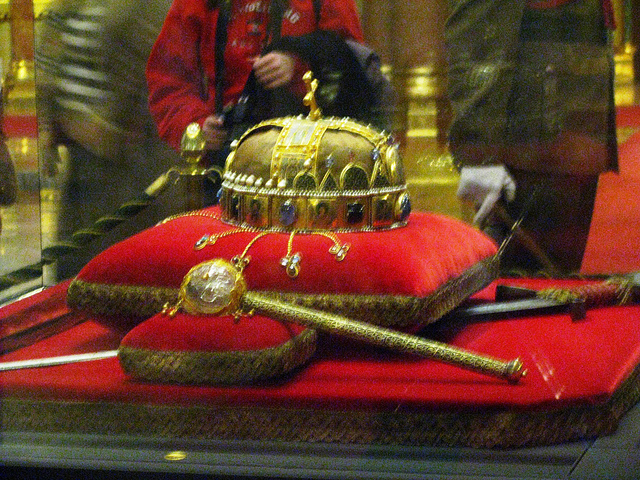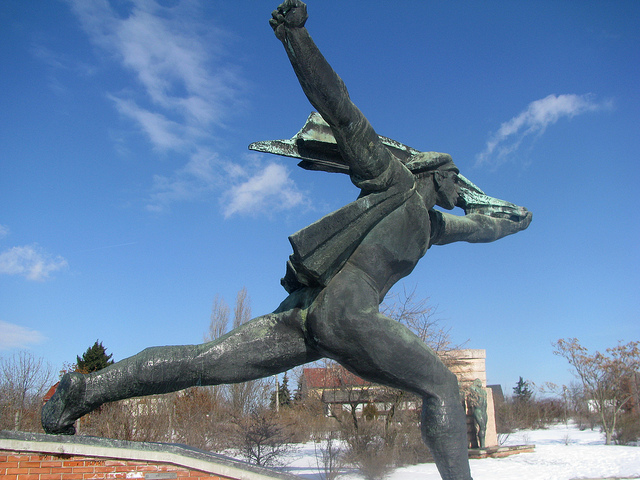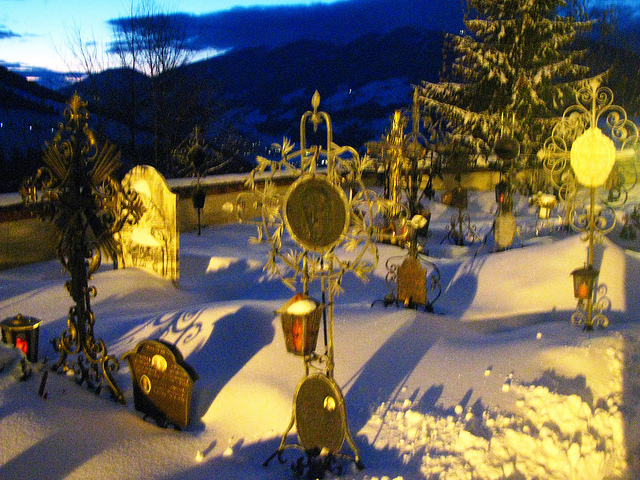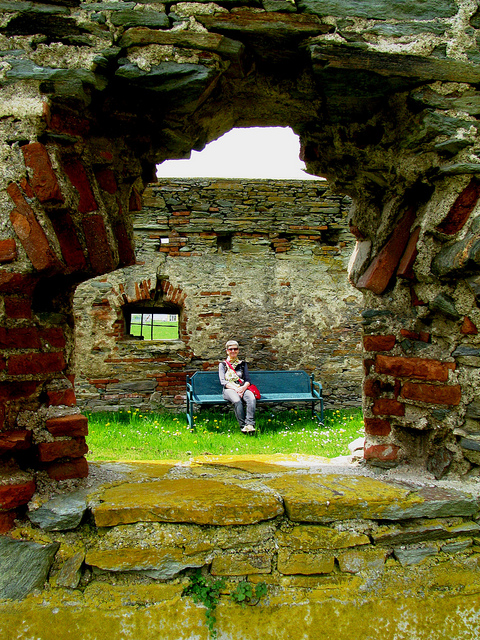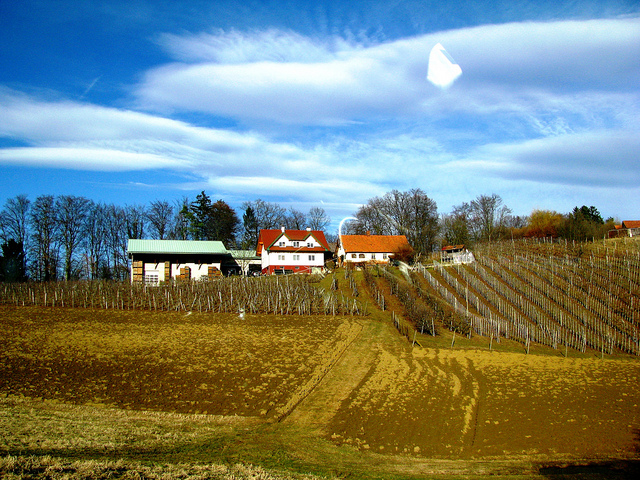Interestingly, the building has many design features that symbolize love (hearts, love birds, etc.) as the architect at the time was deeply in love with a local young lady. On the north side are the remainders of the elevator doors of the original elevator which have long since disappeared. Facing the former elevator is a stained glass window by famous Hungarian glass designer Miksa Roth depicting the Hungarian freedom fighter Lajos Kossuth. With its curvilinear flourishings, the wrought iron-work on the stair railings is also exquisite.
Last but not least I got to up to the top floor which holds the hotel’s spa and workout facilities. The pool has an infinity edge with water gently overflowing while the fitness facilities hold the latest state-of-the-art workout equipment with windows overlooking Budapest.

On the street just north of the Gresham Palace I had a perfect view down to St. Stephen’s Basilica. Before exploring the church, however, I sat down for lunch at a hip and trendy restaurant called TG Italiano. After a delicious pumpkin soup and mixed salad with mozzarella balls I was ready to explore Budapest’s most important church, St. Stephen’s Basilica, so named after the first King of Hungary. The country’s most important church and 3rd highest building was built between 1851 and 1905 and most famously is the resting place of the mummified fist of Hungary’s first king which is housed in a reliquary. Hungary’s biggest bell, with a weight of more than 9 tonnes, is located in the south tower.
At 96 metres, equal to the Hungarian Parliament Building, it is among the two tallest buildings in the Hungarian capital. No building is allowed to be higher than 96 metres. The design for this imposing basilica was created by Miklos Ybl, who was one of Europe’s foremost architects in the second half of the 19th century, and he also designed the Hungarian State Opera House which I was planning to visit later today.

This imposing building has many interesting features: the main portal is huge and features wood carvings of the heads of the Twelve Apostles. Figures of the apostles also crown the exterior colonnade at the back of the church. The main altar is highlighted by a marble statue of St. Stephen with paintings of scenes from his life behind it.
In the entrance area of the church is a statue of St. Gellert and his disciple Emeryka. Towards the back of the church is the entrance to theChapel of the Holy Right Hand where the mummified forearm of King Istvan is displayed in a highly ornamented metal case. As part of the Danube panorama, this basilica was designated as a UNESCO World Heritage Site in 1987.

Back out in the snow I walked a few steps to Deak Ference Square where I took metro line number 1 to the Hungarian State Opera. Budapest’s subway line underneath Andrassy Street is the second oldest metro system in the world – after London’s – and was opened in 1896, just in time for the millennium celebrations. It became a designated UNESCO World Heritage Site in 2002.
My last architectural destination of the day was the Hungarian State Opera, which offers tours every day at 3 and 4 pm in six languages (English, German, Spanish, French, Italian and Hungarian) and tickets can be purchased in the gift shop. The opera was constructed between 1875 and 1884 and built to rival the opera houses of Vienna, Paris and Dresden. Also designed by the great Hungarian architect Miklos Ybl, this performance venue is said to have some of the best acoustics in the world.

Built in a neo-Renaissance design, the building’s front façade features figures of some of Hungary’s most prominent composers: Franz List and Ference Erkel. The foyer is equipped with marble columns and guilded vaulted ceilings and with its murals, its intricately tiled floors and decorative chandeliers, it exudes an aura of opulence. Around the turn of the last century, the sweeping main staircase was a perfect place for society ladies to display their elaborate gowns.
The central stage was equipped with state-of-the-art stage technology and the auditorium holds 1261 seats. The Royal Box is located right in the centre of the three-story circle and features sculptures that represent the four operatic voices: soprano, alto, tenor and bass. Prominent international artists have worked and performed here: Gustav Mahler was the director of the Hungarian State Opera between 1888 and 1891, and even Giacomo Puccini produced two of his operas here in person.

Given the poor weather on this day, I was happy that I had covered four extraordinary architectural destinations and headed back to my cozy room to download my photos and stay in for a relaxing evening.
